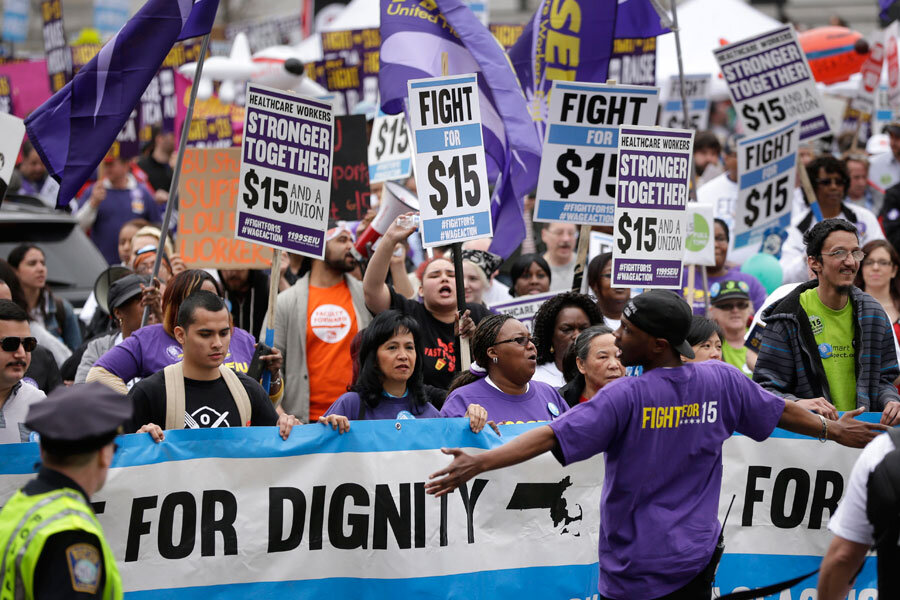Fight for $15: Can fast-food workers influence the presidential election?
Loading...
A year away from the 2016 presidential election, US fast-food workers have launched a nationwide campaign Tuesday to demand a $15 national minimum wage along with union rights.
Supporters of the Fight for $15 campaign say Tuesday’s protest in New York will reverberate through rallies in 500 cities nationwide, by workers throughout low-paying industries. But beyond this week’s protests, advocates hope to begin a yearlong campaign to prove their political importance in the 2016 election.
The Fight for $15 is funded by the Service Employees International Union, which represents 1.5 million workers, and the issue has captured the support of more than 48 million potential voters who support a $15 minimum wage. The campaign describes their low-paid workers as “a voting bloc that can no longer be ignored.”
“These low-wage workers are really interested in going out to the polls and supporting a candidate. This demographic is up for grabs,” Yannet Lathrop, a researcher and policy analyst at the National Employment Law Project, told The Christian Science Monitor during a phone interview Tuesday. “This is a section of the electorate that wants to be a part of the 2016 election.”
The problem? These workers typically don’t vote.
A July 2015 report by the US Census suggests the percentage of Americans participating in elections has a direct correlation with annual income, with the richest Americans most likely to vote. The two groups with the lowest voter turnouts were those with incomes under $10,000 and those with incomes under $14,999, at 24.5 percent and 30.1 percent respectively.
And according to a National Employment Law Project survey, 42 percent of America’s workers are paid less than $15 an hour, proving these minimum wage advocates could be a force to be reckoned with – that is, if they can be persuaded to vote.
Among the workers surveyed who were not registered to vote, 69 percent said they would be more likely to register if there was a presidential candidate who guaranteed a $15 minimum wage and union rights.
Democratic presidential candidates Sen. Bernie Sanders and former Gov. Martin O’Malley have announced their support for a $15 minimum wage while former Secretary of State Hillary Clinton says she supports a $12 minimum wage. And as for the GOP candidates, they have mostly stayed mum on the subject or offered ambiguous statements – making the timing of Tuesday’s protest, on the same day as a GOP debate, especially timely.
“Whether it’s fast food, Walmart, child care, T-Mobile, all these people are paid too little to support their families,” Angela Simler, an employee at a T-Mobile call center in Wichita, Kansas, told The Huffington Post. “The wages have remained stagnant for too long."
The Fight for $15 group says this year will be different – they will hold voter registration drives to help bring their supporters to the polls. “These workers are really starting to be engaged politically,” Ms. Lanthrop told The Monitor.
The national minimum wage was last raised from $6.55 to $7.25 per hour in July 2009. Before 2007 the national minimum wage remained at $5.15 for ten years.
But it is important to note that grassroots movements at the state and local level have already made progress. Twenty-nine states and the District of Columbia have set their minimum wage above the federal level of $7.25 per hour, according to the campaign Raise the Minimum Wage.
The District of Columbia, Washington, and Oregon have the highest minimum wages of $10.50, $9.47, and $9.25 respectively. New York Gov. Andrew Cuomo announced in September that his state will raise the minimum wage to $15 over the next six years, and US cities such as Seattle, San Francisco, and Los Angeles have already raised their minimum wages to $15 an hour.






